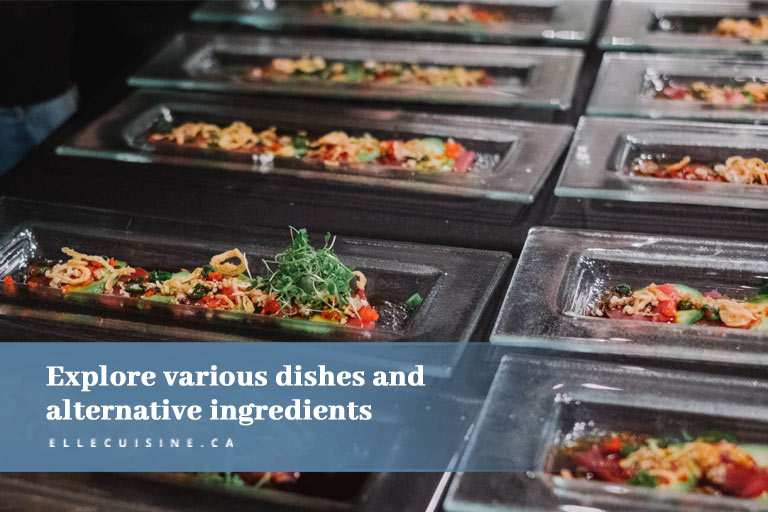Dietary restrictions are becoming a vital consideration in the food service industry. More people than ever are following specific diets due to health concerns, religious practices, or ethical beliefs. Food providers must now accommodate a broad spectrum of needs, ensuring that guests with dietary restrictions feel valued and included.
Catering to these diverse requirements can be challenging. Businesses must navigate complex food safety regulations, avoid cross-contamination, and create menus that offer variety without compromising on taste. Those with dietary restrictions often face difficulties in finding suitable meal options. Meeting these challenges is essential for delivering quality food and service.
Common Kinds of Dietary Restrictions
The growing awareness of health, cultural, and environmental issues has led to an increased demand for specialised dietary options. Here are five common types of dietary restrictions:
- Gluten-Free: People with gluten intolerance or celiac disease must avoid gluten, a protein found in wheat, barley, and rye. Health Canada reports that around 1 in 133 Canadians suffer from celiac disease, making gluten-free diets more common. Cross-contamination is a significant concern, so it is crucial to separate gluten-containing ingredients during food preparation.
- Vegan: Vegan diets exclude all animal products, including meat, dairy, and eggs. Vegans often choose this lifestyle for ethical reasons or environmental concerns. Statistics Canada notes that the number of Canadians identifying as vegan continues to rise, particularly among younger populations. Providing a variety of plant-based dishes that are flavourful and nutritious is key to appealing to this group.
- Nut Allergies: Nut allergies, particularly peanut allergies, affect around 2% of Canadians, according to Food Allergy Canada. Even trace amounts of nuts can trigger severe allergic reactions, so food service providers must be vigilant in ensuring that no cross-contamination occurs. Nut-free alternatives are widely available and should be part of any catering menu.
- Dairy-Free/Lactose Intolerant: Lactose intolerance affects around 7 million Canadians, making it one of the more common food sensitivities. Those affected cannot properly digest lactose, found in milk and dairy products. Dairy-free alternatives such as almond milk, soy milk, or coconut-based products can easily replace dairy in most dishes without compromising taste or texture.
- Kosher/Halal: Religious dietary restrictions like kosher (Jewish) and halal (Muslim) require specific preparation and ingredient guidelines. For example, kosher food must meet Jewish dietary laws, while halal food is prepared following Islamic principles. Certified suppliers and proper labelling help ensure that these needs are met without error.
Planning a Menu for Dietary Restrictions

Planning a menu that accommodates various dietary restrictions requires careful thought and organization. These guidelines can help you create inclusive menus that cater to all:
- Proactive Communication: Initiate open communication with guests about their dietary restrictions and preferences. Consider incorporating a dedicated section on reservation forms or online ordering platforms for guests to specify any needs.
- Label Dishes Clearly: Proper labelling of menu items is essential. Use icons or clear descriptors to indicate whether a dish is gluten-free, vegan, nut-free, or dairy-free. This transparency makes it easier for guests with dietary restrictions to choose suitable options and prevents misunderstandings.
- Offer Variety: Don’t just offer one gluten-free or vegan dish. Instead, provide a range of options so that guests with dietary restrictions don’t feel limited in their choices. Variety ensures that the meal feels more inclusive, regardless of the dietary needs present.
- Work with Certified Suppliers: When sourcing ingredients, use certified suppliers for products like gluten-free grains, vegan meat substitutes, or kosher and halal meats. This ensures that your ingredients meet the necessary standards and reduces the risk of contamination.
- Cross-Train Staff: Ensure that all staff members are trained in handling food for those with dietary restrictions. From kitchen staff to servers, everyone should understand how to manage ingredients safely and how to prevent cross-contact between allergens or restricted items.
- Incorporate Seasonal Produce: Fresh, seasonal fruits and vegetables often fit well into most restricted diets and are generally free from allergens. Seasonal produce adds variety and ensures that your menu stays current and dynamic.
Tips for Food Preparation and Handling
Proper food handling and preparation are critical when catering to dietary restrictions. These tips will help reduce the risk of contamination and ensure the safety of all diners:
- Avoid Cross-Contamination: Use separate preparation areas and utensils for dishes that contain allergens or restricted ingredients. For instance, if you’re preparing gluten-free meals, ensure no wheat-based products come into contact with the utensils or surfaces used.
- Label Storage Areas: Clearly label all storage containers to differentiate between regular and restricted ingredients. This helps staff easily identify which items are safe to use for those with dietary restrictions, reducing the likelihood of mistakes.
- Wash Hands Frequently: Make sure all staff handling food wash their hands thoroughly between preparing different types of meals. This simple measure helps prevent cross-contact and maintains a clean working environment.
- Cook Separate Meals First: When preparing meals for guests with dietary restrictions, cook these meals first. This method helps avoid the potential for cross-contact during the busy preparation of regular meals.
- Use Allergen-Free Zones: Designate specific areas in the kitchen for allergen-free or restricted food preparation. This dedicated space ensures that meals for guests with allergies or restrictions are prepared safely.
Creative Solutions for Dietary Restrictions

Accommodating dietary restrictions does not mean sacrificing creativity. These ideas can inspire you to craft delicious and inclusive dishes:
- Ingredient Exploration: Embrace the vast world of alternative ingredients. Experiment with gluten-free flours, plant-based milks, alternative sweeteners, and a wide variety of fruits, vegetables, and grains.
- Global Flavours: Draw inspiration from diverse culinary traditions to create dishes that are both inclusive and exciting. Explore the vibrant flavours of Asian, Mediterranean, or Latin American cuisines.
- Texture and Presentation: Elevate the dining experience with thoughtful plating and attention to texture. Incorporate crunchy elements, creamy sauces, and visually appealing garnishes to create a multi-sensory delight.
- Interactive Dining: Consider offering interactive elements like build-your-own bowls or customizable platters, allowing guests to tailor their meals to their specific preferences.
- Dietary-Specific Events: Host special events or tasting menus dedicated to specific dietary needs, showcasing the versatility and deliciousness of inclusive cuisine.
Catering to dietary restrictions is an essential part of modern food service. With proper planning, clear communication, and a commitment to safety, food providers can create inclusive and delicious meals for everyone. Offering variety and creativity in your menu not only accommodates dietary restrictions but also enhances the dining experience for all your guests.
At Elle Cuisine, we understand the importance of accommodating dietary needs. Our experienced chefs and dedicated staff are committed to creating delicious and safe dishes for everyone. Contact us today at (647) 430-3553 to discuss your catering needs and discover how we can create a memorable dining experience for all your guests.
